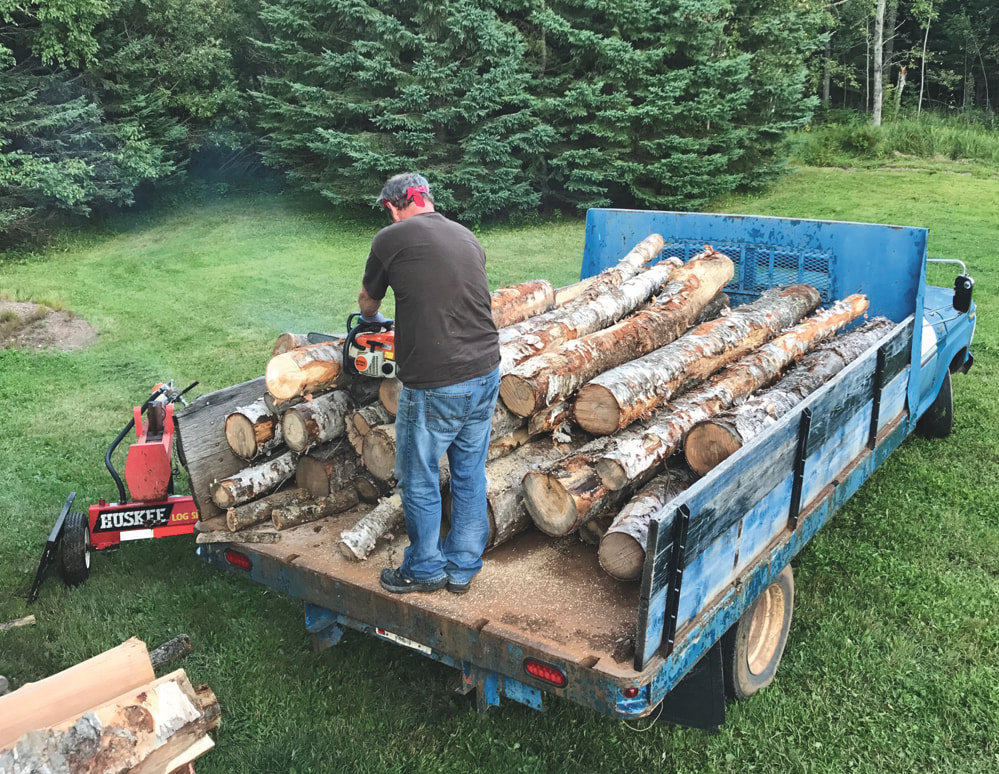Tom Palen,a broadcaster, pilot, writer, and our Guest Columnist! Archives
July 2024
Categories |
Back to Blog
Why Do I Have to Learn This?9/11/2018  I’m sure every kid has done it at some point. I know I did on more than one occasion. I sat in school, trying to focus on an assignment, wondering, “Why do I have to learn this? I’m never going to use this in real life.” The subject could have been math, English, history, or any course that didn’t seem interesting to me at the time. Thankfully, my teachers were very persistent and they pushed me to get the work done. As life goes on, I find myself saying, “I wish I would have paid more attention in...” far more often than the times I asked “Why do I have to learn this?” In my senior year of high school, I took vocational auto mechanics. Three hours every day - fourth, fifth and sixth periods. As a kid, I dreamed of being an over-the-road truck driver and in high school I thought this is a class where I will learn things I might actually use someday. In this class we did more than just study the books. We did a lot of hands-on work; from oil changes to tune-ups, we changed shocks and struts and replaced exhaust systems. We rebuilt starters and alternators. We learned how to analyze a car, determine the problem, and fix it. It was a fun class and I was learning things I could actually use in real life. Ken Corbett was the auto mechanics teacher; a very neat, well groomed man. Every day, he wore a pressed, dark green mechanics shirt tucked into his matching pants. He always wore a belt and polished black work shoes. Somehow he never seemed to get dirty. He was a fair man, often gruff and to the point, but he had a soft side too, and I really liked him. One Friday, after taking attendance, he asked, “Who wants to do a complete engine overhaul on a little four cylinder Bobcat?” For those who don’t remember, the Bobcat, made by Mercury, was basically the same car as the Ford Pinto. No one was raising their hand. If he would have asked us to overhaul a Chevy Camaro, a Ford Mustang, or a Dodge Charger, every kid in the room would have been waving their hand in the air, bouncing out of their seats, begging for rights to that project. I looked at my buddy, Kenny Ware, and quietly asked, “Do you want to do the overhaul together? Me and you?” “Sure, why not? It’ll be fun.” He said. I raised my hand, “Palen?” Mr. Corbett said, “Do you want to do it?” Waving my finger between myself and my friend, I answered, “Kenny and I will work on it together.” Mr. Corbett turned around and wrote on the chalkboard, “Bobcat. Palen and Ware.” While he was writing, he said, “It will be here Monday. Make sure any projects you’re working on get finished up today, because you’ll be on the Bobcat every day until it’s done,” He turned back toward us. Taking a red shop rag from his back pocket, he wiped white chalk dust from his hands, “Unless you’re waiting for parts. Then you can squeeze in some other small projects.” Monday came. Kenny and I looked around the parking lot outside the shop, but we didn’t see a Bobcat. “It must already be inside.” Kenny said. “Yeah, it must be.” I agreed. We went inside and looked in the shop. There weren’t any cars inside yet. “We must have overlooked it in the parking lot.” Kenny said. “Yeah, we must have.” I agreed. The bell was about to ring and anyone who wasn’t in their seat when it rang would be marked down as being tardy. Kenny and I rushed to our seats. The bell rang. Mr. Corbett sat at his desk and called out names. A response of “here” or “present.” followed each name called. He called out “Ware?” “Hey.” Was Kenny’s reply. Mr. Corbett laid down his yellow, number two pencil, looked over the top of his glasses, sighed and said, “Mr. Ware. You may answer ‘here’ or ‘present.’ You will not answer ‘hey.’ Hay is for horses and we work on cars in this class - not buggies.” He picked his pencil up again, “Ware?” He called out. “Here.” Kenny answered. Mr. Corbett stood up and went over the schedule of who would be working on what projects for the day. “I don’t want any cars pulled in until the Bobcat gets here. It’s going to be here awhile. We’ll put it in the front space, so it doesn’t have to be moved once the engine is pulled.” About that time we heard the garage door open and a fairly high pitched humming noise that sounded more like the hydraulic transmission of a tractor than a car. The engine was coughing and backfiring. It didn’t sound good at all. Everyone jumped up from their desks and ran to the shop. Larry Claybaugh, the auto body teacher, pulled up in a Bobcat - not a Mercury, but a skid steer Bobcat. He lowered the front bucket to the floor, turned off the engine and climbed out of the cage. “What is this?” Kenny asked. Mr. Corbett walked to the side of the machine, pointing individually to each big red letter, he read them out loud. “B-O-B-C-A-T. Bobcat.” He said, grinning. “This must be the Bobcat you and Palen are going to overhaul.” The whole class was laughing; everyone except Kenny and me. “Uh - We assumed you were talking about a Mercury Bobcat.” I objected. “You know what happens when you assume...you should have asked more questions before taking the project.” He replied. Kenny protested, “But we thought you were talking about a Mercury.” Corbett wasn’t going to budge. “Life isn’t always what you think it’s going to be.” He said, “Now get to work.” “We can’t overhaul this!” I insisted. “Why not?” Corbett barked back. “We don’t know how.” I answered. Mr. Corbett just shook his head, “You didn’t know how to time an engine when you got here either. I taught you how to do it. You’re not here because you already know how to do all this. You’re here to learn.” He handed me a thick service manual, “Now, you can start by reading this and learn how to pull the engine out of a Bobcat.” Mr. Corbett turned and looked at the rest of the class, who were standing around to see how this event would play out. “I thought I gave you all your assignments. Let’s get on them - unless you’d rather go back to the classroom where I can give you a three-hour written test.” The boys scattered about the shop to start their work. Mr. Corbett walked back over to Kenny and me. His softer side came out. “Boys, quit worrying. You’re making this more than it is. Once you’ve pulled the motor, it’s just another four-cylinder engine. You’ve got the overhaul manual and you’ve got me when you have questions.” He paused to let that sink in. He opened the big steel door on the back of the Bobcat. The latch handle was greasy. He looked at his hand, then his gruff tone returned, “You’re going to need an engine hoist to lift that back door off. It’s heavy, so call me when you’re ready. I’m going to help you do that - I don’t want anyone getting hurt...” He pulled a red shop rag from his back pocket and wiped the grime from his hand as he turned and walked away, “Bower! What are you doing? That’s not where you’re supposed to be...that starter isn’t going to install itself! Now get to work!” I thought about Mr. Corbett the other day. Cars have changed so much, I wouldn’t even begin to know how to overhaul an engine. Honestly, since high school, I’ve only changed my own oil half a dozen times or so. After I purchase five quarts of oil, the filter and such, I’d only save a few bucks and I have to figure out what to do with the old oil. It’s just easier to let the shop do it. As much fun as I had in Ken Corbett’s auto mechanics class, in hindsight, I could have said; “I’m never going to use any of this in real life.” Being on the road as much as I have this year, I’ve managed to neglect and put off projects at home that need to be done. One of those projects is cutting, splitting and stacking firewood for the upcoming winter. I was getting worried that if I waited much longer, the wood won’t be seasoned, dry enough to burn. Loggers generally don’t want to deliver less than a full truckload of logs, which would be about a fifteen-year supply of wood for us. That’s way too much! Plus, getting a semi truck down our narrow little road would be way more work than it was worth. I only needed two full cords at the most, which, cut and stacked makes about six face cords of firewood. I found a logger who would sell me the smaller amount of wood, if I could pick it up myself. Fortunately, I have my trusty dump truck, Old Blue. She’ll hold exactly one full cord at a time. I came home with my first load of logs. I would cut the eight-foot logs into 16” lengths while they were in the truck, then split them with my log splitter and stack them. The chainsaw was running great and I had new chains with really sharp teeth. The logs were cutting easy and soon I had a big pile. I shut off the saw and jumped out of the truck to start splitting the logs. I pushed the little bulb to prime the engine on the log splitter, turned on the choke, set the throttle about half open, then pulled the cord. Then, pulled the cord again and again! Stupid log splitter! I pulled and pulled, but it wouldn’t start. Maybe I flooded the engine. I let it sit awhile, then tried again. I pulled again and again and again until my arm literally hurt. In frustration, I kicked the tire and cursed the log splitter. It was getting dark anyway, so I picked up my tools and called it a night. The next morning, I tried to start the machine again. It still wouldn’t start. I called Jeff, a friend who has done some mechanical work on my truck. “Can you work on a small engine; a Briggs and Stratton?” I asked him. Jeff said that he could, “Give me a call Wednesday.” I forgot, I was calling him on Labor Day. Darn! I needed to get this wood cut. I had a road trip coming up later in the week, and I was worried my firewood wouldn’t have time to cure before the heating season, plus, I still had another load to pick up after this. Maybe the air filter was plugged. I removed the cover. It looked good, but I went ahead and cleaned it anyway. I pulled the cord. Nothing. Maybe the fuel is bad. I removed the fuel line and drained the tank. I filled it with fresh gas and tried to start it again. Nothing. I removed the spark plug wire. If I could keep it close to the plug tip and pull the starter rope, I would be able to see if it was getting a spark. The spark plug was on the front of the motor and the starter cord was on the back. I couldn’t do both. I got my socket wrench and removed the spark plug. It was pretty dirty. I called the auto parts store to see if they had this type plug, but no one answered. I called the hardware store on a chance they would have it; again, no one answered the phone. “Why isn’t anyone answering their phone?” I asked aloud, then answered myself, “Because it’s Labor Day, that’s why.” I went to the garage and found a couple clean shop rags. I soaked the end of one with clean gasoline and wiped the oil from the tip of the plug. There was still crud between the electrode and the ground electrode. I smiled because I knew the proper names of the parts of a spark plug. I used the thicker hem of my t-shirt to run through the gap and remove the build up. I recalled Ken Corbett telling me, “Never blow on a spark plug with your mouth. You’ll end up spitting on it and it won’t fire if it’s wet. Use the air hose.” After blowing the spark plug clean with an air hose, I reinstalled it in the motor. I gave the engine two pumps on the gasoline primer, opened the choke and set the throttle halfway. “Come on baby! Show me some magic.” I said, then pulled the cord once. The engine sputtered and died. I pulled the cord again, and bamo! She was running! I let it warm up for a few moments, then closed the choke and pushed the throttle to high! She was running “smooth as a baby’s bottom,” Mr Corbett used to say. I picked up the first log, set it in the cradle and pulled the level. The hydraulic cylinder extended smoothly, pushing the steel wedge to the big log. The motor beared down. The machine whined and growled a bit. There was the sound of cracking wood and the log snapped, splitting into two pieces and falling to either side of the machine. I put my hands in the air and danced, “Yes! Yes! You show that log who’s boss!” I looked up to the sky, still dancing, “Thank you, Mr. Corbett!” I could see him smiling, as teachers will do when a student follows their direction and something goes exactly as it should. I think I heard him answer, “See, Palen? See the trouble a dirty spark plug can cause and how a clean spark plug will fix your problem.” I could also imagine him saying, “Don’t stand there patting yourself on the back. Those logs aren’t going to split themselves. Get to work.” I took a clean shop rag from my back pocket, wiped the grease from my hands, then tucked the rag back in my pocket again. I put my gloves on, looked at the wood splitter and said, “Here we go baby, let’s get this done.” and I picked up another log and set it in the cradle. As I worked, I thought about the pioneers and how hard they must have worked to cut and split enough wood by hand to last a winter; keeping an uninsulated building at a comfortable fifty degrees. History. I looked at each log deciding how many pieces to cut it into. Math. I wrote this story and thought: did the log splitter bear down? Or bare down? English. I smiled, thinking about how many times I questioned, “Why do I have to learn this? I’m never going to use this in real life anyway!” I looked at my completed stacked piles of wood; enough for the winter, then I thanked every teacher who pressed me to get the assignment done, whether I wanted to, or not. Tom can be reached for comment at Facebook.com/tom.palen.98
0 Comments
Read More
Leave a Reply. |

Contact Us:
Phone: 507.238.9456
e-mail: [email protected]
Photo Press | 112 E. First Street |
P.O. Box 973 | Fairmont, MN 56031
Office Hours:
Monday-Friday 8:00 a.m. - 4:00 p.m.
Phone: 507.238.9456
e-mail: [email protected]
Photo Press | 112 E. First Street |
P.O. Box 973 | Fairmont, MN 56031
Office Hours:
Monday-Friday 8:00 a.m. - 4:00 p.m.
Proudly powered by Weebly



 RSS Feed
RSS Feed